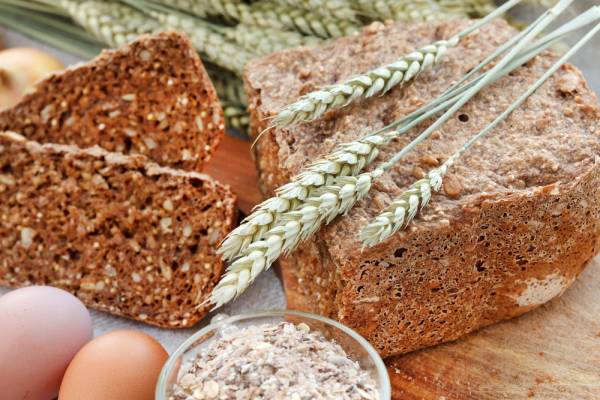- Empty cart.
- Continue Shopping
How to Choose the Right Types of Bread for Fiber

Including fiber-rich foods in your diet is crucial for digestive health and overall well-being, and bread can be a convenient source of dietary fiber. However, not all bread varieties offer the same fiber content.
1. Look for Whole Grains
Opt for bread made from whole grains. Whole grain breads are made from the entire grain, including the bran, germ, and endosperm. This means they contain more fiber compared to refined grain breads.
2. Read the Label
Check the ingredient list on the bread packaging. Look for whole grain or whole wheat as the first ingredient. Avoid breads that list “enriched” flour, as this indicates that some of the natural nutrients, including fiber, have been removed.
3. Check the Fiber Content
Look for breads that provide at least 2-3 grams of fiber per slice. Ideally, aim for breads with higher fiber content, as they will contribute more significantly to your daily fiber intake.
4. Avoid Added Sugars and Additives
Choose breads with minimal added sugars and avoid those with excessive amounts of additives and preservatives. A simple ingredient list is often an indication of a healthier bread option.
5. Consider Sprouted Grain Bread
Sprouted grain bread is made from whole grains that have been allowed to sprout. This process increases the availability of nutrients, including fiber. It can be a nutritious and fiber-rich option.
6. Explore Specialty Breads
Explore specialty breads made from grains like spelt, rye, or quinoa. These varieties can offer unique flavors and textures while providing good sources of fiber.
7. Experiment with High-Fiber Add-Ins
Some breads come fortified with additional sources of fiber, like seeds, nuts, or dried fruits. These can be excellent choices for increasing your fiber intake.
8. Consider Homemade Options
Consider making your own bread at home using whole grain flours and adding extra fiber-rich ingredients like chia seeds, flaxseeds, or oats. This gives you complete control over the ingredients.
9. Watch for Hidden Sources of Fiber
Some breads may contain added isolated fibers, such as inulin or chicory root fiber. While these can increase the fiber content, they may not offer the same health benefits as naturally occurring fiber from whole grains.
10. Moderation is Key
While choosing high-fiber bread is important, it’s also crucial to maintain a balanced diet. Incorporate a variety of fiber-rich foods like fruits, vegetables, and legumes alongside your bread choices.
11. Consider Your Individual Needs
Take into account any dietary restrictions or specific health concerns you may have. For example, individuals with gluten sensitivities or celiac disease should opt for gluten-free bread options made from alternative flours like almond or coconut.
Conclusion: Nourishing Your Body with Fiber-Rich Bread Choices
Selecting the right types of bread for fiber doesn’t have to be a complex task. By prioritizing whole grain options, reading labels, and being mindful of ingredient lists, you can make informed choices that support your digestive health and overall well-being. Remember, incorporating a variety of fiber-rich foods into your diet ensures you receive a spectrum of nutrients and benefits.








